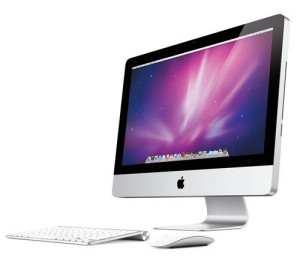
 How much should I charge for graphic design jobs is a question many freelance graphic designers and small business owners battle with over and over again especially when pitching for new projects. I have found myself many times asking questions like, “Did I over charge or did I sell my services too cheaply?”
How much should I charge for graphic design jobs is a question many freelance graphic designers and small business owners battle with over and over again especially when pitching for new projects. I have found myself many times asking questions like, “Did I over charge or did I sell my services too cheaply?”
It is challenging when you follow up on a potential client only to be told that your rates are too high hence disqualify you. At that point the common temptation is to plan to lower your rates which might not even be the best solution to countering the price objection.
In fact lowering the rates sometimes proves that you are not sure of what you are offering or the value you are adding. Alternatively, if you lower your rates with a high margin with no reasonable explanation the client tends to think you were trying to fleece them.
So how much should you charge and what should you consider before settling on a particular figure?
1. The dynamics of the project.
More often than not projects are never similar and asking the right questions is essential so that you are able to get proper perspective of the work.
For example, two different clients, client A and client B might ask for a quotation to design an A2 poster. Client A requires you to source for the images and deliver samples for approval within two days while Client B supplies you with high resolution images and needs samples for approval within three days. The question to ask is, Is it reasonable to charge the clients the same? Definitely no because though both want an A2 poster designed, the dynamics are different and should therefore attract different charges.
Having a fixed rate for every job or charging as the next graphic designer across the street is recipe for failure.
It is therefore important to get as much details as possible regarding any project so that you are able to provide an informed price.
2. Your experience
As long as you are learning, every year increases your experience so that when a similar project like the one you handled in the past years come up again, it finds you better equipped to solve it more quickly and efficiently.
Therefore, do not fear raising your rates occasionally because you are also adding to your experience with every passing year.
3. Industry rates
Sometimes, what would appear cheap in one country or area might be expensive in another. It is therefore good to find out what the acceptable industry rates are so that you do not charge yourself out of business or be the one devaluing the trade by offering unsustainable cheap rates.
At this point one would ask, what about the influx of “designers” in the market who are charging Kshs 450 ($5) for a logo or Kshs 2,700 ($30) for a website? The answer is to ignore them and stick to your rates if you know they are fair and you can justify them.
It is better to lose out on a job because you were expensive than get one by undercharging.
If you over charge it is easier to come down in future but very difficult to raise your rates to a client you brought on board by undercharging. Actually, such a client might even want to bargain when giving you more work in future and the worst part is that he might refer you based on the same rates.
Competing based on price alone leads to a war that is won by clients but one that leaves graphic designers closing their businesses and crying foul.
Instead of lowering your rates, explain to the client what you are bringing to the table that is different from the next guy offering an incredibly low price.
4. Type of client
If you are asked give a quotation for redesigning a logo for a world renown brand like Microsoft or Mercedes Benz, the price would not be the same as redesigning the logo of a local chemist in your neighbourhood.
How the two companies’ impact society is so different and the revenues each generates per annum is far apart from each that such details must be taken into consideration when coming up with the total price.
Since graphic design is a service and not a product, it is impossible to have a common rate for all graphic design services here in Kenya or anywhere else in the world. Consequently, striking a balance so that you are neither too expensive to get hired nor too cheap to be trusted is principal.
There are many more factors to consider when determining how to charge, feel free to add to the list through the comment form below.
Jessica Hische has also written quite an insightful article on pricing which is a must read and you can find it here.
Hope this helped,

 on a local newspaper advertisement and wondered whether the logo was an act of plagiarism or vector images taken too far. As can be seen, the logo is made up of vector images shown below which I had come across in the year 2011 in one of the vector images website. The images have just been slightly tweaked and a tray with coins added to produce the logo. The temptation has been to blame the Commission on Revenue Allocation (CRA) since they might have turned away professionals who were charging more to design the logo and settled for the lowest bidder who might not have been a professional. That is just a speculation which might be wrong but before throwing the blame entirely on CRA, I believe the designer carries most blame if this is an act of plagiarism. As much as vector images are widely used, it is tricky to lift them as they are and use them for a logo. A good logo should be original amongst other qualities and not just a picture downloaded from the internet.
on a local newspaper advertisement and wondered whether the logo was an act of plagiarism or vector images taken too far. As can be seen, the logo is made up of vector images shown below which I had come across in the year 2011 in one of the vector images website. The images have just been slightly tweaked and a tray with coins added to produce the logo. The temptation has been to blame the Commission on Revenue Allocation (CRA) since they might have turned away professionals who were charging more to design the logo and settled for the lowest bidder who might not have been a professional. That is just a speculation which might be wrong but before throwing the blame entirely on CRA, I believe the designer carries most blame if this is an act of plagiarism. As much as vector images are widely used, it is tricky to lift them as they are and use them for a logo. A good logo should be original amongst other qualities and not just a picture downloaded from the internet. 





